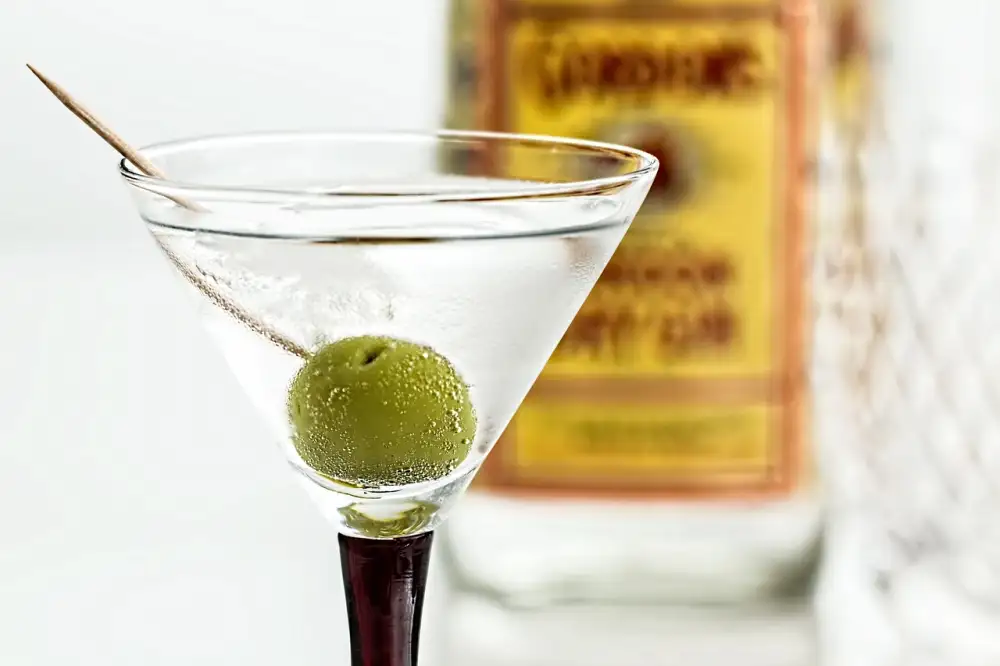Savor the Richness of Sweet Vermouth: Indulge in the Botanical Infused Delights of this Fortified Wine

- History and Origins of Sweet Vermouth
- Production Process of Sweet Vermouth
- Flavors and Botanicals Used in Sweet Vermouth
- Popular Brands and Varieties of Sweet Vermouth
- How to Enjoy Sweet Vermouth: Cocktail Recipes and Pairings
- Health Benefits of Sweet Vermouth
- Tips for Storing and Serving Sweet Vermouth
Sweet Vermouth is a delightful fortified wine that has been enjoyed for centuries. It is a rich and aromatic drink that is infused with a variety of botanicals, giving it a complex and unique flavor profile. Whether sipped on its own or used as a key ingredient in cocktails, Sweet Vermouth offers a truly indulgent experience for the senses. In this article, we will dive into the world of Sweet Vermouth, exploring its history, production process, flavors, popular brands, cocktail recipes, health benefits, and tips for storing and serving. So sit back, relax, and prepare to savor the richness of Sweet Vermouth.
History and Origins of Sweet Vermouth
Sweet vermouth has a rich history that dates back centuries. Its origins can be traced to Italy, where it was first created in the late 18th century. The idea of infusing wine with herbs and botanicals can be attributed to Antonio Benedetto Carpano, who is often credited as the inventor of sweet vermouth.
Carpano's creation quickly gained popularity and became a staple in Italian households. It was originally used for medicinal purposes, believed to aid digestion and improve overall health. However, its delightful taste soon made it a favorite among connoisseurs and it began to be enjoyed purely for its flavor.
The production of sweet vermouth spread beyond Italy and found its way into other European countries. In France, renowned brands such as Martini & Rossi and Noilly Prat emerged, each adding their own unique twist to the traditional recipe.
Over time, sweet vermouth also made its way across the Atlantic to America. It became an essential ingredient in classic cocktails like the Manhattan and Negroni, further solidifying its place in cocktail culture.
Today, sweet vermouth continues to captivate palates around the world with its complex flavors and aromatic profile. Its history is a testament to the enduring appeal of this fortified wine and its ability to enhance the drinking experience.
Production Process of Sweet Vermouth
The production process of sweet vermouth involves a careful combination of wine, herbs, spices, and botanicals. It begins with a base wine, usually white or red, which is fortified with a neutral spirit to increase its alcohol content. The wine is then infused with a blend of botanicals such as wormwood, gentian root, orange peel, and various herbs and spices. These ingredients are macerated in the wine for a period of time to extract their flavors and aromas. After the maceration process, the vermouth is filtered and often aged in oak barrels to enhance its complexity. Finally, sweetening agents such as sugar or caramel are added to achieve the desired level of sweetness. The result is a luscious and aromatic fortified wine that can be enjoyed on its own or used as an ingredient in cocktails.
Flavors and Botanicals Used in Sweet Vermouth
Sweet vermouth is known for its complex and aromatic flavors, which are achieved through the infusion of various botanicals. The most common botanicals used in sweet vermouth include herbs, spices, roots, barks, and flowers.
Some of the popular botanicals used in sweet vermouth production include wormwood, which gives it a bitter note; gentian root for its earthy flavor; orange peel for a citrusy twist; cinnamon for warmth; and vanilla for a hint of sweetness.
Other botanicals that can be found in different variations of sweet vermouth include cloves, cardamom, nutmeg, chamomile, thyme, coriander seeds, and many more. These botanicals are carefully selected and blended to create a harmonious balance of flavors that make sweet vermouth so unique.
The use of these botanicals not only adds depth and complexity to the taste profile but also contributes to the aromatic qualities of sweet vermouth. The combination of these flavors and aromas creates a delightful sensory experience that is truly indulgent.
Whether enjoyed on its own or as an ingredient in cocktails, the flavors and botanicals used in sweet vermouth make it a versatile drink that can be savored in various ways.
Popular Brands and Varieties of Sweet Vermouth
There are several well-known brands of sweet vermouth that offer a wide range of flavors and styles to suit different palates. One of the most popular brands is Carpano Antica Formula, which is known for its rich and complex flavor profile. Another renowned brand is Martini & Rossi, which offers a variety of sweet vermouths including Rosso, Bianco, and Extra Dry.
For those who prefer a more herbal and bitter taste, Punt e Mes is a great choice. It has a unique combination of sweetness and bitterness that adds depth to cocktails. Cocchi Vermouth di Torino is another notable brand that produces high-quality sweet vermouth with a balanced blend of botanicals.
Other popular varieties include Dolin Rouge, Noilly Prat Rouge, and Cinzano Rosso. These brands offer different levels of sweetness and distinct flavor profiles that can enhance various cocktail recipes.
When choosing a sweet vermouth, it's important to consider personal preferences and the specific flavors desired for the intended use. Whether you're looking for something bold and robust or light and delicate, there is a sweet vermouth out there to suit every taste.
How to Enjoy Sweet Vermouth: Cocktail Recipes and Pairings
When it comes to enjoying sweet vermouth, the possibilities are endless. This versatile fortified wine can be enjoyed on its own or used as a key ingredient in a variety of cocktails. One classic cocktail that showcases the flavors of sweet vermouth is the Negroni. Made with equal parts gin, sweet vermouth, and Campari, this cocktail is a perfect balance of bitter and sweet. Another popular cocktail is the Manhattan, which combines sweet vermouth with whiskey and bitters for a smooth and sophisticated drink. For those looking for something refreshing, try mixing sweet vermouth with soda water and a twist of lemon for a simple yet delicious spritz. When it comes to pairings, sweet vermouth pairs well with a variety of foods. Its herbal and botanical flavors complement rich cheeses like Gorgonzola or Roquefort, while its sweetness balances out the saltiness of cured meats like prosciutto or salami. It also pairs well with desserts like chocolate truffles or fruit tarts. So whether you prefer your sweet vermouth in a classic cocktail or paired with your favorite foods, there's no doubt that this botanical-infused delight is sure to satisfy your taste buds.
Health Benefits of Sweet Vermouth
Sweet Vermouth not only tantalizes the taste buds but also offers some health benefits. Due to its herbal infusion, it contains antioxidants that can help reduce inflammation and protect against chronic diseases. The botanicals used in its production, such as wormwood and chamomile, have been traditionally used for their digestive properties. Sweet Vermouth may aid digestion and alleviate stomach discomfort. Additionally, the wine base provides a small amount of resveratrol, a compound known for its potential heart-healthy effects. However, it's important to consume sweet vermouth in moderation to fully enjoy its health benefits.
Tips for Storing and Serving Sweet Vermouth
To ensure the longevity and quality of your sweet vermouth, it is important to store it properly. Here are some tips to keep in mind:
1. Store in a cool, dark place: Sweet vermouth should be kept away from direct sunlight and heat, as they can degrade its flavors and aromas. A cellar or a dark cabinet is an ideal spot.
2. Seal tightly: Once opened, make sure to seal the bottle tightly after each use. This will prevent oxidation and maintain the freshness of the vermouth.
3. Refrigerate after opening: While not necessary, refrigerating sweet vermouth can help extend its shelf life by slowing down oxidation. Just remember to bring it back to room temperature before serving.
4. Serve chilled or on the rocks: Sweet vermouth is best enjoyed chilled or over ice to enhance its flavors. You can also experiment with serving temperatures to find your preferred style.
5. Use proper glassware: Opt for a stemmed glass or a tumbler when serving sweet vermouth. The shape of the glass can influence the aroma and taste experience.
6. Garnish with care: When garnishing your sweet vermouth cocktail, choose ingredients that complement its botanical profile. Citrus peels, herbs like rosemary or thyme, or even a cherry are popular choices.
By following these tips, you can fully appreciate the richness and complexity of sweet vermouth in every sip. Cheers!
In conclusion, sweet vermouth is a versatile and flavorful fortified wine that adds depth and complexity to cocktails and culinary creations. Its rich history and production process make it a unique and cherished beverage. With its wide range of flavors and botanicals, there is a sweet vermouth variety to suit every palate. Whether enjoyed on its own or mixed into a cocktail, sweet vermouth offers a delightful experience for the senses. So why not indulge in the botanical-infused delights of this exquisite fortified wine and savor the richness it brings to your life?
Published: 25. 11. 2023
Category: Food



